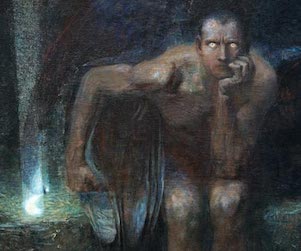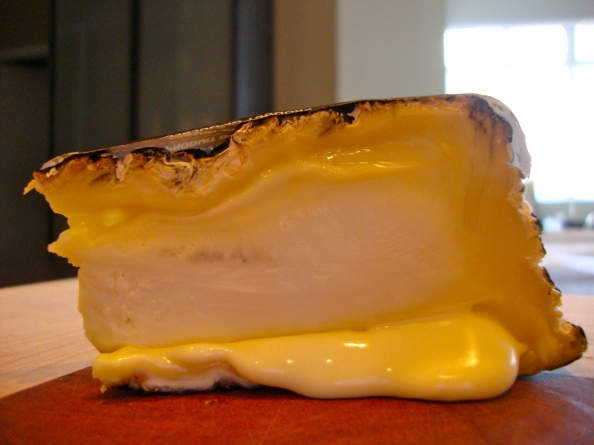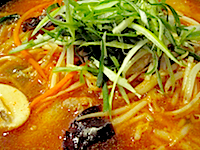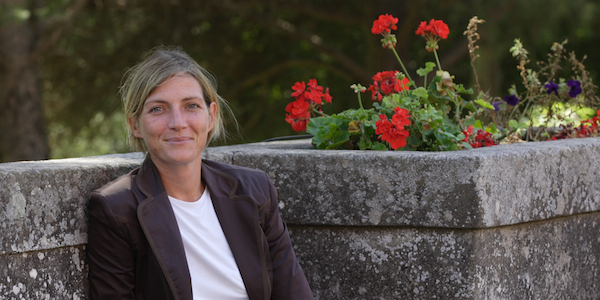Lorette C. Luzajic on what to drink with scary pictures.
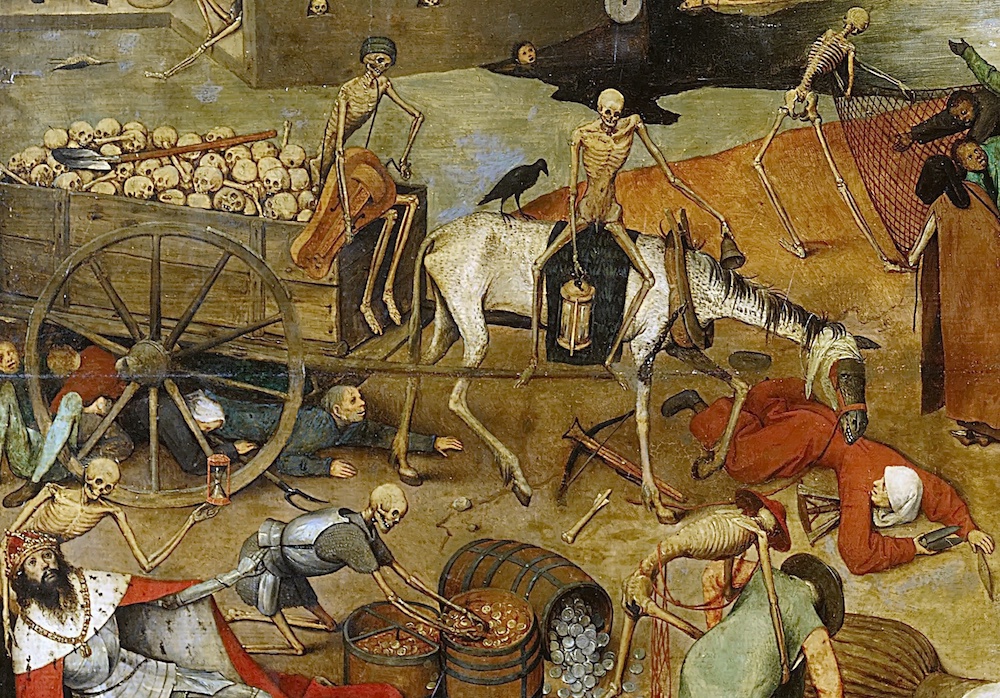
The origins and meaning of Halloween are shrouded in the cobwebs of history, a twisted, mysterious millennial-plus brew of deep pagan rites and Catholic Commemoration of All the Faithful Departed.
Today the Mexicatholic rituals of ancestral remembrance join the syncretic heritage; the dancing skeletons and cheerful pageantry are woven into the entirety of the popular imagination in North America, right through the American canyons and cities, and way on up in to the remote Canadian communities where the snow turns into the sky.
Culture is an amazing thing.
This year, we can add in to the holy day’s evolution an epidemic of psycho clowns luring witless children into dark lairs in darker woods.
And even more terrifying is the bizarre censorship trend where socially upright citizens decry any costume or ritual that might be someone else’s, eerily oblivious of the meaning of “disguise” or “role-play.”
Universities once took on subjects such as Caligula, or cannibalism under Mao, or Dante’s Inferno without needing to hire the special victim’s unit or build safe spaces for students and their teddies. But today are they are offering extra counselling for anyone traumatized by the sight of a drunk frat boy in a tiny sombrero. Appropriation is the most harrowing of the dark arts.
Halloween killjoy was once the domain of a meagre fringe of the modern church. Even in my fundie childhood, trick or treating was more or less in the clear, as long as I didn’t tempt demons by dressing like them. The cow costume was fitting for a farm girl, for example, but not the fishnet-clad hooker. But today’s new horror at any suggestion of costumes without borders means I can only dress up as a bowl of borscht, or as Stalin, or maybe as a bratwurst decked out in lederhosen. You’d stay in, too.
Oh, yes, this world is a terrifying place and here’s my prescription for it: wine, and art.
All kidding aside, it is true that one of the greatest themes of human creativity is terror.
Shakespeare, the Bible, African dances of death, Don Giovanni, American Horror Story: confronting death and evil through art is both necessary and noble.
Whatever else has come and gone about how Halloween began, or how it will go, this is the time of year to stream a few horror movies on Netflix, listen to some harrowing opera, catch up on Murder, She Wrote, or study some fascinating paintings and other works of art.
The Ascent to Paradise – 12th Century Icon, at Monastery of St. Catherine, Mount Sinai, Egypt
pairs with: Apothica Dark Red (California), $16.95
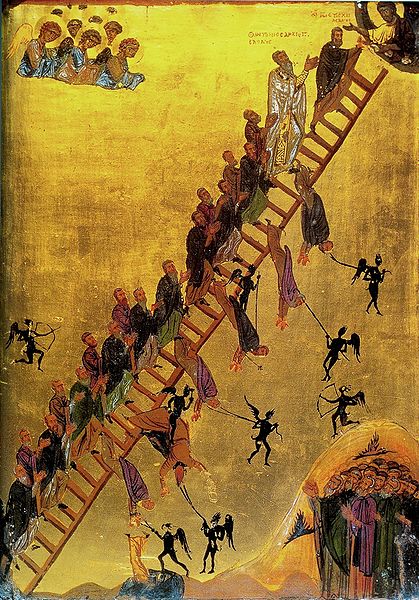
I love this icon, a strange little piece that lives on century after century.
Around 600 A.D., a saint named John Climatus wrote a treatise for ascetic orthodox contemplation, and this shiny gold number is based on that work, the Ladder of Divine Ascent. The Ladder documents thirty rungs toward heaven that include conquering cowardice,malice, and deceit.
This artwork isn’t particularly terrifying today, but using our imaginations to put it into context, we can see the gold glinting wildly off dancing candle flames. With eight centuries removed, those coquettish little Bill Traylor-esque silhouettes turn back into devils.
Even so, it’s still okay to pair this up with a little bit of monk juice. We are, after all, still hundreds of years away from the Reformation, when booze became sin.
True, gluttonous consumption and drunkenness were admonished, but the early church naturally carried on with Jewish traditions of moderation.
We have the Catholic contemplatives to thank, really, for this bottle of Apothica Dark Red in front of me. The monks in the Middle Ages were very helpful in steering wine from disgusting to delicious.
Ancient imbibers would not have had this artfully structured mouthful of blueberry chocolate, but the Catholic vintners were instrumental in looking for ways to avoid oxidization, moving away from using salt water, marble dust, and strong herbs to mask the taste of spoiled wine.
Saturn Devouring His Children- Guilia Lama
pair with: Pieropan La Rocca Soave Classico 2013, $37.95
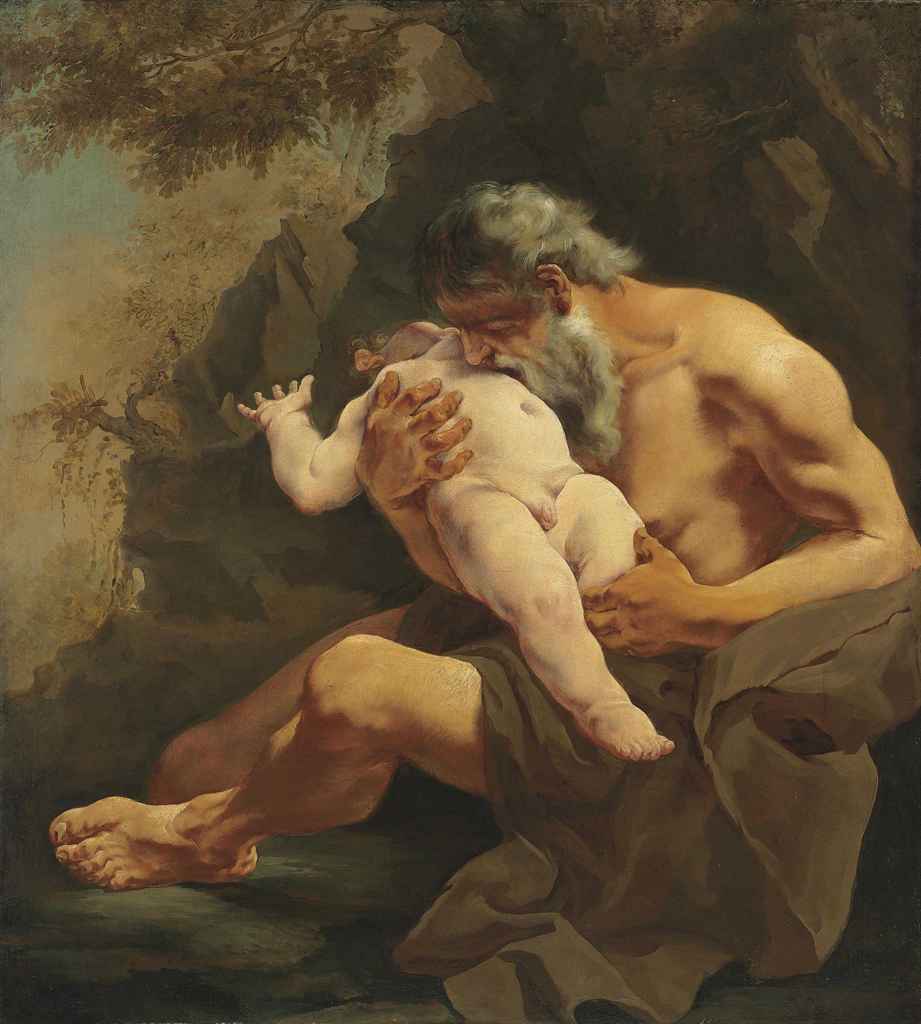
In paintings, the theme of Saturn Devouring His Children is most famous from Goya’s black period, but the lesser known Guilia Lama piece from the century before is my voted contender for best of show.
Goya’s gore is as harrowing and spectacular as the myth itself, which is why is it’s king of all renditions. But Lama’s Saturn packs a wallop in its understatement. Where other artists have garishly rendered their cannibal, Lama offers nothing of gore.
What’s most violating about the work is the absolute tenderness with which Daddy is digging in.
This incongruous light touch calls for a white wine, and a classy garganega, faintly perfumed with lemon peel and almonds, is perfect.
Like Saturn’s lunch, it is delicate and sweet as cream.
Joel-Peter Witkin- photography, assemblage pairs with: xx.
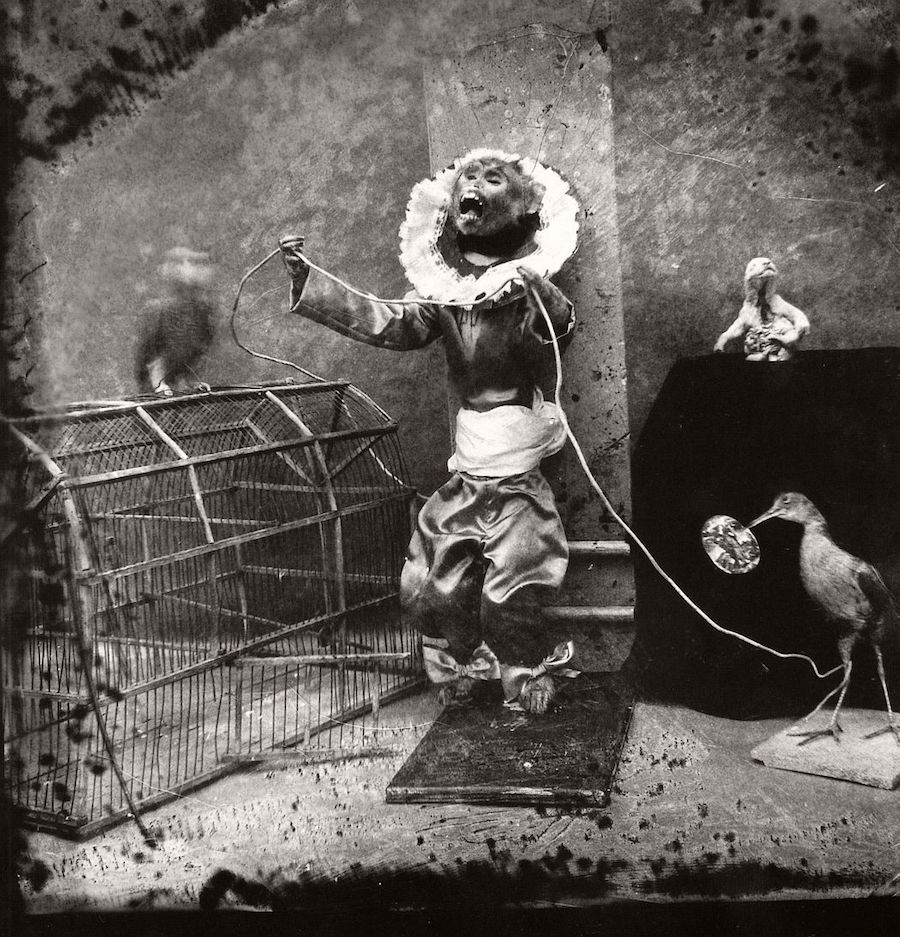
Do not Google this name unless you’re willing to see your fears through to the very brink. I’m not kidding.
Witkin’s quest to court terror and taboo is a kind of psychological edgeplay, and most of what he did as an artist was only legal in Mexico.
He called for the most marginal, fringe, sick, and sideshow variables as subjects in his photography, looking for beauty in what was broken or depraved.
The sadomasochists, the fat, the dying, the lonely- all this, but Witkin was still unfulfilled, as his still life arrangements and portraits had simply not gone far enough.
He wanted body parts and corpses to play with, props to compose and decompose.
When Witkin began taking unclaimed bodies from morgues to mutilate and rearrange them, his art really came to life.
Any winery I might pair on your behalf with this artist will go out of business, so I will simply counsel you to select for yourself something serviceably bloody and visceral.
I chose Cisplatino Paquena Reserva from Pisano, Uruguay. The tannat merlot blend was suitably strong to steel my nerves.
I normally abhor art that approaches this level of perversity and transgression. Taking a crap in a Mason jar or cutting up horses is not art, it is the most repulsive form of narcissism and nihilism.
But I confess to spending long hours with Witkin, letting him take me into the maze of his mind.
Witkin didn’t see his art as crazy the way we do: he saw suffering as sanctified.
The disconnect between our disgust and his madcap, driven reverence yields a peculiar, uncanny aesthetic. The arrangements of medical instruments and severed limbs and fetish paraphernalia along with the quick and the dead are disconcertingly elegant.
Witkin was six years old when he witnessed a terrible car crash. He has described how this trauma defined him forever after. He saw something rolling from one of the overturned cars, coming towards him like a ball.
“It was the head of a little girl,” he writes. From this grisly intersection of fates, his artwork was born, “…my use of severed heads and masks; concerns with violence, pain, and death; of things extravagant, emotional, and deserving adoration.”
Lucifer – Franz von Stuck
pair with: Königschaffhauser Steingrüble Pinot Noir 2014, Germany, $17.95
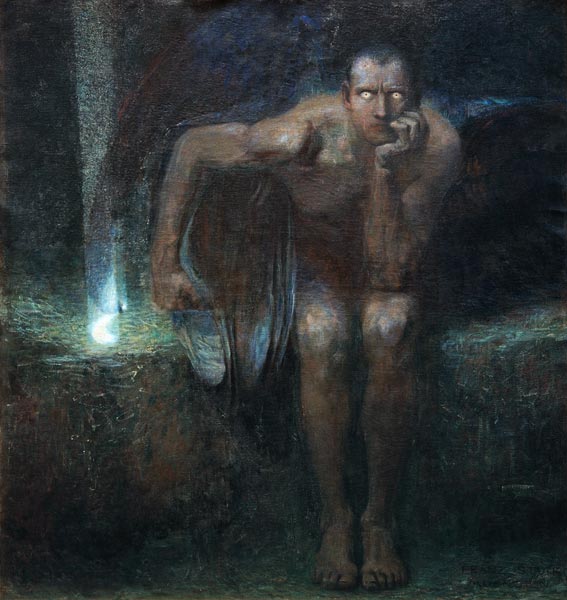
Franz von Stuck comes across as a man obsessed with God, love, murder.
Like a majority of artists, von Stuck’s works were mostly concerned with spiritual and classical mythologies, but there was no measure of detachment in these paintings. Von Stuck couldn’t do clinical. He became wholly immersed in his studies. The artwork are like vivid reenactments of the dark mysteries.
This underrated artist has a body of stellar works, from Eve draped by the serpent, to Salome, to Sisyphus. But von Stuck’s definitive work was Lucifer.
Anyone who has encountered this Satan has never quite been cleansed of his presence.
He sits to the side in the darkness, and his darkness is pulsing with strange light.
When I first discovered this masterpiece, I sat with the devil in total silence and shared with him a bottle of the best Spätburgunder I had on hand.
The Triumph of Death – Pieter Bruegel
pair with: pink Champagne, triumph of life
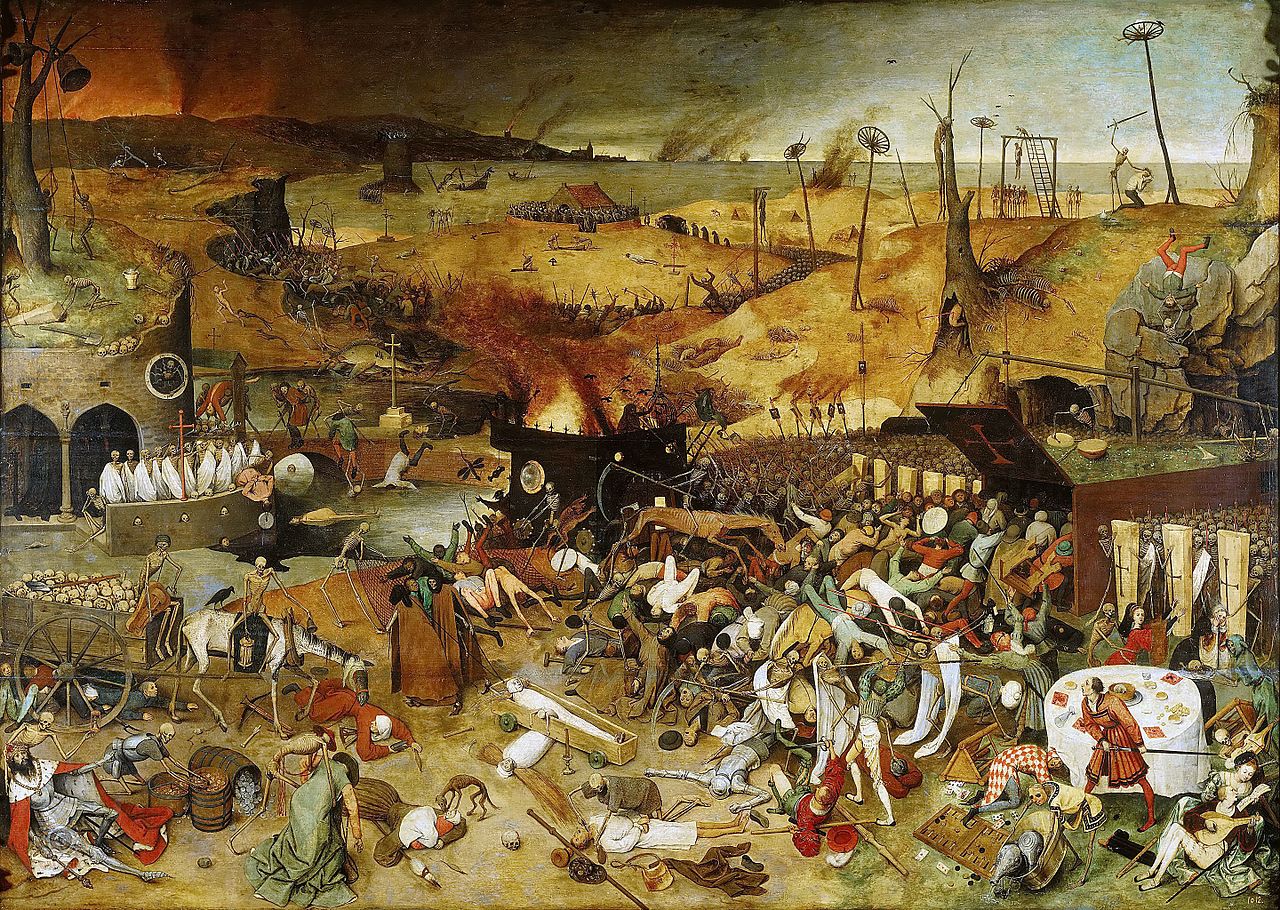
One of our most innate fears is demise by disease, and various viruses and plagues have long been popular themes in our creations.
Epidemics are a staple of cinema and horror writings, but they have also been featured in countless paintings going back millennia.
Bruegel’s Triumph of Death can be seen allegorically, stuffed to the gills with surreal terror tidbits in the tradition of Dante’s circles of hell. Like Bosch and all his other followers, Bruegel often painted on hell and how to get there.
But this painting is most terrifying because it is not about mankind’s enigmatic philosophical fears. It’s about the Black Plague, and may as well be documentary photography.
Like many of Bruegel’s paintings, this one really can be contemplated for hours. Any square inch of the work is its own world. There are exhausting and devastating details. The heaped skeletons and scorched earth are graphic depictions of human suffering that should humble the hardest of hearts.
Plague paintings or war photography and documents of natural disasters require a toast to life, so splurge on some pink Champagne and say thank you for what will most certainly be taken away.
On that note, take note that the widespread tradition of “cheers” or “salut” before sipping wine is an expression of wishing “good health” or showing gratitude.
Happy Halloween!
See all of Lorette C. Luzajic Wine & Art columns here. And her art and more writing at mixedupmedia.ca.

